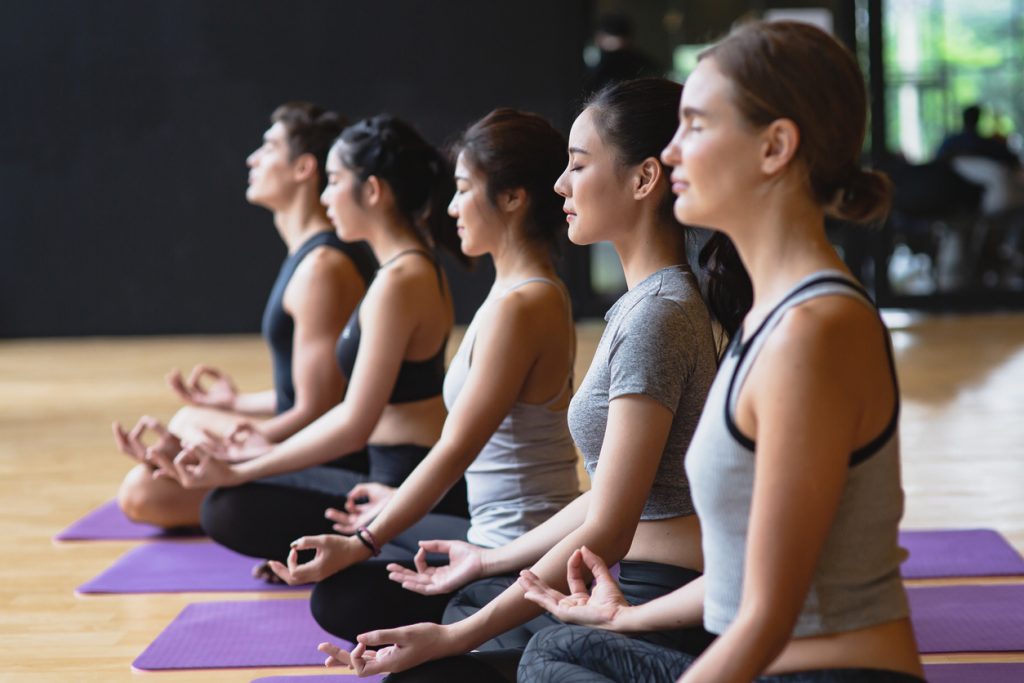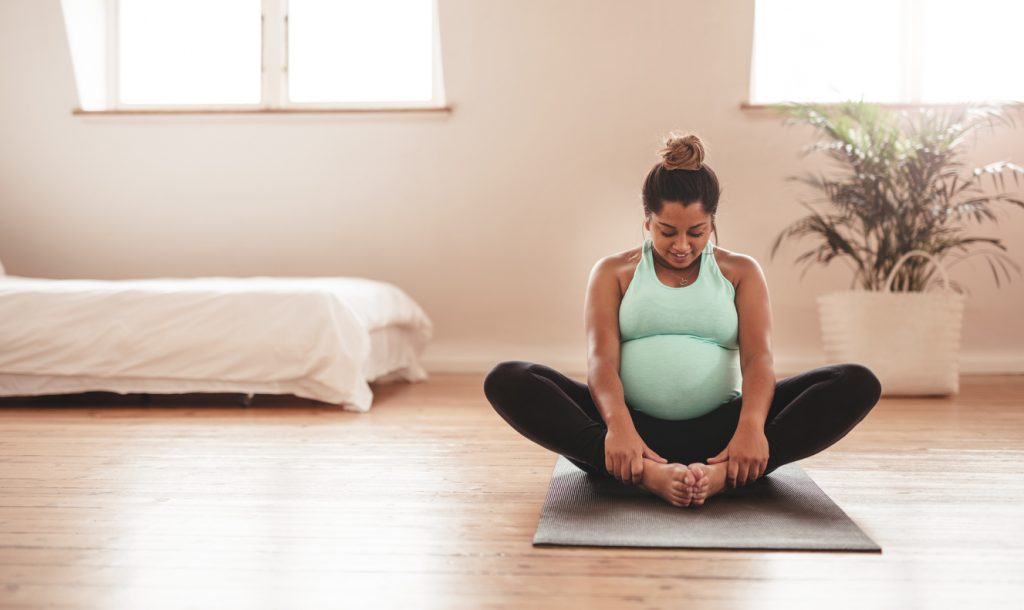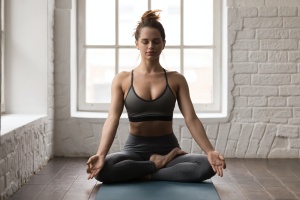Though we follow different traditions of yoga asana, most all lead us to the final destination of relaxation, savasana. The practice of asana prepares our students’ minds and bodies for deeper awareness, by which savasana is the gateway. Savasana is subtle, a practice that builds the foundation for meditation and pratyahara. As yoga teachers, we can prepare our students for a deep savasana practice once we comprehend why we do it, and how.
 Savasana integrates asana and ujjayi breathing on a deep level. It also serves as a transition from the formal practice of yoga into the outside world. Many students fall asleep during savasana, which is normal, but not the intent of the practice. The body becomes fatigued from the work of a balanced asana practice, while the mind becomes focused and calm through concentrated breathing. In savasana, the needs of the body and mind are transcended, and true relaxation and release can take place.
Savasana integrates asana and ujjayi breathing on a deep level. It also serves as a transition from the formal practice of yoga into the outside world. Many students fall asleep during savasana, which is normal, but not the intent of the practice. The body becomes fatigued from the work of a balanced asana practice, while the mind becomes focused and calm through concentrated breathing. In savasana, the needs of the body and mind are transcended, and true relaxation and release can take place.
In savasana, some yogis may experience a dreamlike state, not quite like sleep, but unconscious nonetheless. Others may simply lose themselves, remembering nothing but the lingering stillness after the practice is complete. And some may have experiences beyond the mind and body that defy explanation. Because of the subtle nature of savasana, it is best to let whatever comes come, and to speak little of the inward nature of the practice. To articulate into words what cannot be perceived by the intellect bypasses the mysterious nature of our connection to the unknown. Just like yoga asana, some sessions are difficult, and some come with gentle ease, but in the end, savasana is a practice– a process to apply again and again.
From the outset, savasana appears to be simple and defined. Lie down, close your eyes, do nothing. However, for yoga teachers to hold space for our students to enter this deep state of relaxation, we require technical know-how, practice, and attentiveness. If your students are restless in savasana– fidgeting, coughing, or are lying with their eyes open, implementing the following techniques will help you to prepare them for deeper restoration. First, a balanced asana practice, with both rigor and cool down, is essential. The body must be worked in order to access the mind, and that work must be released in order to fully relax. Offering a cooling sequence about 10 minutes long is effective, especially if the final poses are done on the back, such as jathara parivattanasana, Revolved Belly Pose. Next, allow for 5 minutes of deep ujjayi breathing, either lying down or sitting up. Smoothly transitioning your students from the dynamic practice of asana into meditative breathing will prepare them to relax and will support the integrative process of savasana.
 Creating a calming environment during the cool down portion of your class will subconsciously prepare your students for savasana. Dim the lights if possible, or turn them off completely. Slowly lower the volume of your regular music until it is mute prior to beginning your breath exercises. Similarly, begin to soften your instructional voice and slow your cadence as you bring your students into their final postures. I find that using the same words to guide my students to the floor, class after class, signals a state of relaxation, with each instruction slower and quieter than the last. Encourage your students to lie down quietly with minimal movement. Instruct them, practice after practice, to relax, to be still, and to let go. Finally, play a rhythmic selection of music especially reserved for savasana, ideally, without words that the mind can grab ahold of.
Creating a calming environment during the cool down portion of your class will subconsciously prepare your students for savasana. Dim the lights if possible, or turn them off completely. Slowly lower the volume of your regular music until it is mute prior to beginning your breath exercises. Similarly, begin to soften your instructional voice and slow your cadence as you bring your students into their final postures. I find that using the same words to guide my students to the floor, class after class, signals a state of relaxation, with each instruction slower and quieter than the last. Encourage your students to lie down quietly with minimal movement. Instruct them, practice after practice, to relax, to be still, and to let go. Finally, play a rhythmic selection of music especially reserved for savasana, ideally, without words that the mind can grab ahold of.
While your students are journeying inward, it is important for you, as the teacher, to reinforce the subtle work of their practice. Savasana is not a time for a teacher to check their phone, to leave the room and socialize in the reception area of the studio, or any number of things that might pull attention away from the students. Savasana is a time for you to go inward, as well. During savasana, you can sit in silent introspection, chant mantra in your mind, or lie down quietly. Be present in the subtly of the practice, for this space is our forum of learning, as much as it is for our teaching.
Allow your students to remain in savasana for at least 5 minutes, and then slowly, softly, and quietly draw them out of their inner space by bringing awareness back to the breath. Take several breaths yourself and give ample silence between your cueing in allowance for the deep state your students are coming out of. Encourage gentle movements before the greater motion of turning to a side. Patiently guide them to a seated position, and end your class as appropriate. In this way, the effects of the entire practice of asana, ujjayi, and savasana will stay with your students long after they leave the studio space. In the end, savasana is the crowning jewel of an asana practice, one that can touch the heart and souls of all who practice it.


 This calls to attention the
This calls to attention the  Tight hips or preexisting yoga injuries can cause knee pain or discomfort around the knee. The common instructions to maintain proper alignment in poses that involve bending the knees are to track the kneecaps over the second middle toe, but that is something that can vary from person to person, depending on their circumstances and goals of their practice.
Tight hips or preexisting yoga injuries can cause knee pain or discomfort around the knee. The common instructions to maintain proper alignment in poses that involve bending the knees are to track the kneecaps over the second middle toe, but that is something that can vary from person to person, depending on their circumstances and goals of their practice.
 Sh!t happens: traffic, family issues, deadlines at work, a missed morning alarm clock… While the reasons may vary, tardiness is an occurrence that you can prepare for. Studio protocol varies. Some studios lock the door 15 minutes after class has begun. Some, like group exercise classes at a health club, have an open door policy. Once a late student has entered the asana room, it is the responsibility of the teacher to include them into the practice as smoothly as possible.
Sh!t happens: traffic, family issues, deadlines at work, a missed morning alarm clock… While the reasons may vary, tardiness is an occurrence that you can prepare for. Studio protocol varies. Some studios lock the door 15 minutes after class has begun. Some, like group exercise classes at a health club, have an open door policy. Once a late student has entered the asana room, it is the responsibility of the teacher to include them into the practice as smoothly as possible. Some attention seeking behaviors present themselves easily. There is the student who talks during class, either to you, or to other students. To respond to this student encourages on-going dialogue. To allow for conversation among your students during class is a distraction to others. In response, you can offer the direction of “
Some attention seeking behaviors present themselves easily. There is the student who talks during class, either to you, or to other students. To respond to this student encourages on-going dialogue. To allow for conversation among your students during class is a distraction to others. In response, you can offer the direction of “


 Apana vayu is the subtle downward movement of energy within the body, and the key to maintaining a pregnancy to full term. Certain therapies, exercises, and herbs may disturb apana vayu. Therefore, the intent of this article is Ayurveda practices insight, rather than a treatment protocol. Due to the complexities of pregnancy, it is wise to leave treatments in the hands of experienced Ayurvedic practitioners.
Apana vayu is the subtle downward movement of energy within the body, and the key to maintaining a pregnancy to full term. Certain therapies, exercises, and herbs may disturb apana vayu. Therefore, the intent of this article is Ayurveda practices insight, rather than a treatment protocol. Due to the complexities of pregnancy, it is wise to leave treatments in the hands of experienced Ayurvedic practitioners. In her Ayurvedic essays, Terra Richardson of Cambridge University explains that a baby is physically conscious of his or her gestational development through the mother’s sense organs. Ancient Ayurveda acknowledges the development of the fetus’s sense organs through ceremonial rites preformed during different stages of pregnancy. According to Richardson, a modern-day pregnant woman can feed her baby’s senses by increasing the quality of her sensory input. She should “see beautiful and loving things, listen to loving and melodious sounds, touch pleasing things, and be touched in loving ways, taste wholesome tastes, and smell fragrant odors.” In other words, by surrounding herself in a beautiful, supportive, and loving environment, a mother’s womb becomes an equally safe, nourishing, and peaceful space for her baby’s consciousness to develop in.
In her Ayurvedic essays, Terra Richardson of Cambridge University explains that a baby is physically conscious of his or her gestational development through the mother’s sense organs. Ancient Ayurveda acknowledges the development of the fetus’s sense organs through ceremonial rites preformed during different stages of pregnancy. According to Richardson, a modern-day pregnant woman can feed her baby’s senses by increasing the quality of her sensory input. She should “see beautiful and loving things, listen to loving and melodious sounds, touch pleasing things, and be touched in loving ways, taste wholesome tastes, and smell fragrant odors.” In other words, by surrounding herself in a beautiful, supportive, and loving environment, a mother’s womb becomes an equally safe, nourishing, and peaceful space for her baby’s consciousness to develop in.
 Outside of renouncing our Western lives for a medical school-length period of time with the masters of yore, how can we both learn Ayurvedic principles and inculcate them within our lives? Take an online quiz to determine our dosha (body constitution)? Self diagnose and treat perceived imbalances with herbs from our local health food store? Invest hundreds, maybe thousands of dollars on Ayurvedic treatments from a certified practitioner, only to find that such remedies are subtle, and require months, if not years of implementation to soothe our ailments?
Outside of renouncing our Western lives for a medical school-length period of time with the masters of yore, how can we both learn Ayurvedic principles and inculcate them within our lives? Take an online quiz to determine our dosha (body constitution)? Self diagnose and treat perceived imbalances with herbs from our local health food store? Invest hundreds, maybe thousands of dollars on Ayurvedic treatments from a certified practitioner, only to find that such remedies are subtle, and require months, if not years of implementation to soothe our ailments? The basis of
The basis of  My daily practice begins with classical Surya Namaskar, which is repetitive cycle of twelve poses that both
My daily practice begins with classical Surya Namaskar, which is repetitive cycle of twelve poses that both  Now, close your eyes. Keeping the whole body engaged, breathe. Take full ujjayi breaths and scan the body once more, beginning at the big toes, and all the way up again, engaging the whole body with awareness and breath. Keeping the body engaged, relax the neck, jaw, face, brow, and scalp. Sense the duality of the engaged, firm, tight, tense, activated body, paired with breath awareness and a purposeful softening of the face. The practice of Tadasana provides an introspective experience aligned with the true purpose of yoga. Physically, the yogi is activated and engaged in the manifest world. Internally, the yogi is calm, focused, and relaxed. In this way, Tadasana embodies the essence of a yogi.
Now, close your eyes. Keeping the whole body engaged, breathe. Take full ujjayi breaths and scan the body once more, beginning at the big toes, and all the way up again, engaging the whole body with awareness and breath. Keeping the body engaged, relax the neck, jaw, face, brow, and scalp. Sense the duality of the engaged, firm, tight, tense, activated body, paired with breath awareness and a purposeful softening of the face. The practice of Tadasana provides an introspective experience aligned with the true purpose of yoga. Physically, the yogi is activated and engaged in the manifest world. Internally, the yogi is calm, focused, and relaxed. In this way, Tadasana embodies the essence of a yogi. Asana, otherwise known as the physical practice of yoga, is only one of eight facets of yoga. Through asana practice, we achieve control of the body by positioning ourselves into different postures that strengthen and tone our muscles and organs. In every pose, we focus on engaging the bandhas, or energy centers in the body. Tapping into
Asana, otherwise known as the physical practice of yoga, is only one of eight facets of yoga. Through asana practice, we achieve control of the body by positioning ourselves into different postures that strengthen and tone our muscles and organs. In every pose, we focus on engaging the bandhas, or energy centers in the body. Tapping into 


